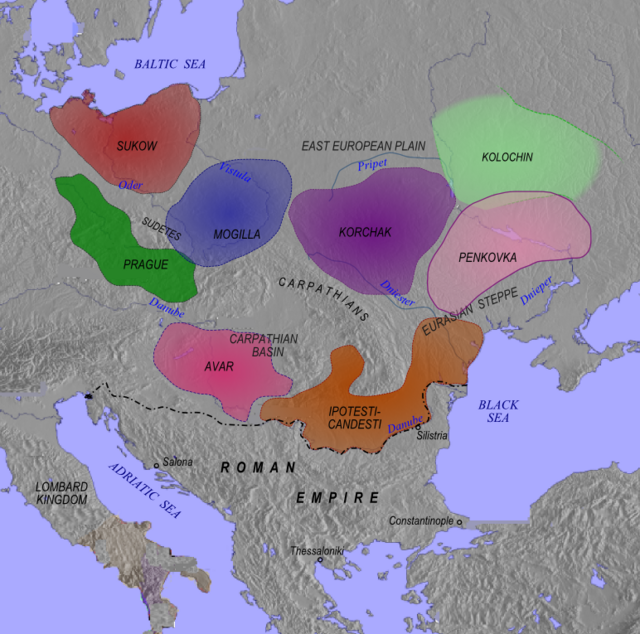Top Qs
Timeline
Chat
Perspective
Ipotești–Cândești culture
Eastern European archaeological culture From Wikipedia, the free encyclopedia
Remove ads
The Ipotești–Cândești culture (Romanian: Cultura Ipotești-Cândești, Ukrainian: культура Іпотешть-Киндешть) was an archaeological culture in Eastern Europe. It developed in the mid-6th century by the merger of elements of the Prague-Penkovka and Prague-Korchak cultures and local cultures (including Germanic and Roman) in the area between Prut and Lower Danube.[1][2] It stretched in the Lower Danube over territory in Romania and Moldova.[3] The population of the area was mostly made up of Early Slavs.[2] There are views that it derived from the Chernyakhov culture and represented a group of the Antes,[3] but also mixed with Sclaveni.[2] The houses were identical to the Slavic huts of the Prague-Korchak and Penkovka areas.[4] The sites in Romania are known as Ipotești-Candești-Ciurel[5] or Ipotești-Ciurel-Cândești.[6]

In terms of distribution of archaeological sites, the vast majority (132 out of 170 in total) associated with Ipotești-Cândești culture are situated between Argeș river and Bărăgan Plain. The largest density of settlements of this culture was found around what is today the city of Bucharest and Ilfov County, with a recorded number of 36 sites in and around the city and an additional 24 sites in the neighboring area of Snagov. Other areas with significant density are around Vadu Săpat, near Prahova river, which contains approximately 31 sites, and a cluster of 24 sites are located near Alexandria, Teleorman.[7]
Remove ads
References
Sources
Further reading
Wikiwand - on
Seamless Wikipedia browsing. On steroids.
Remove ads
